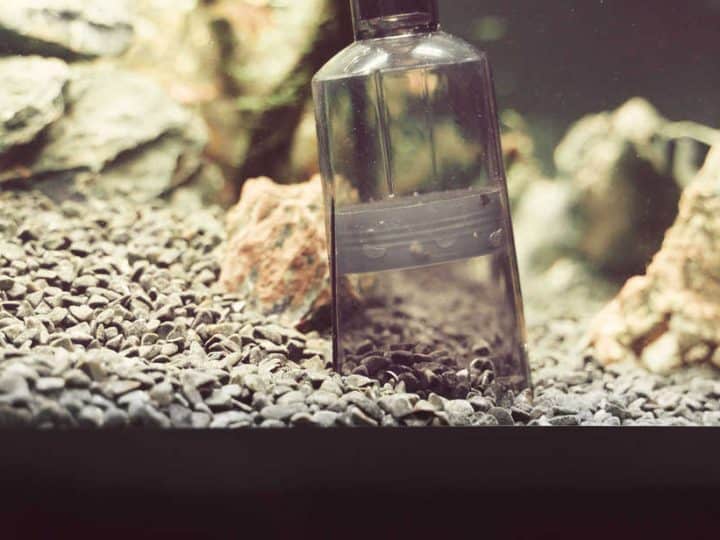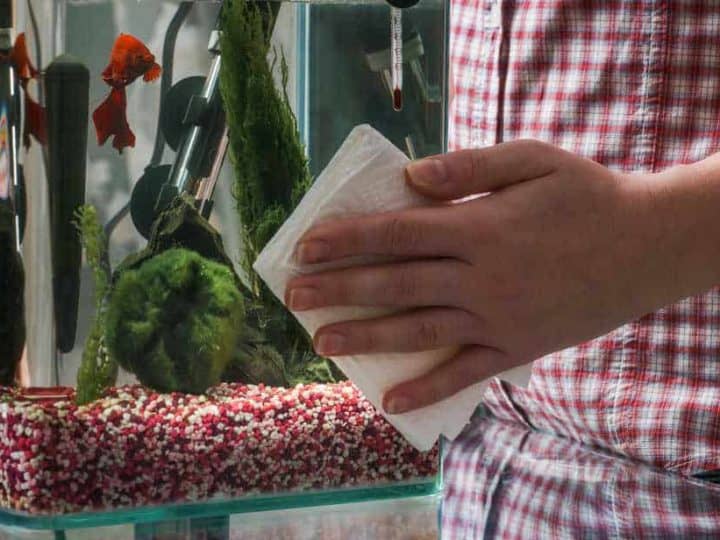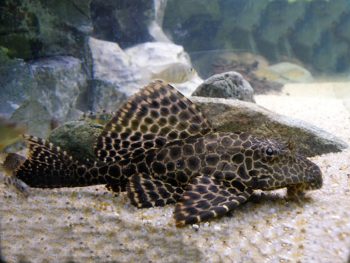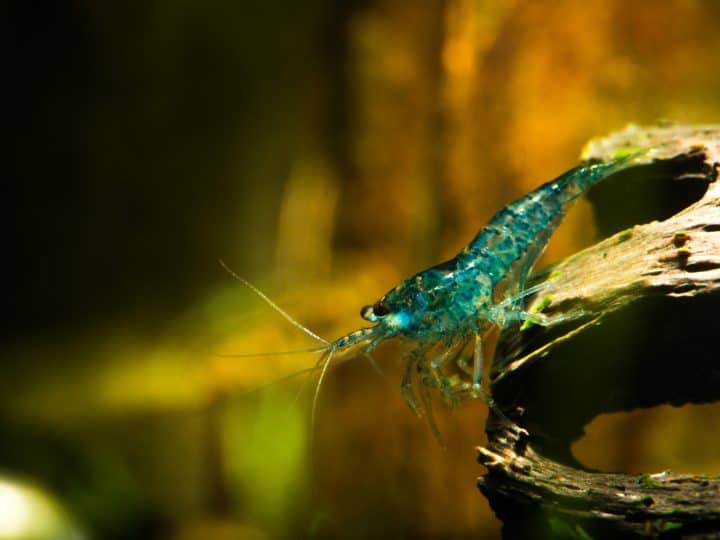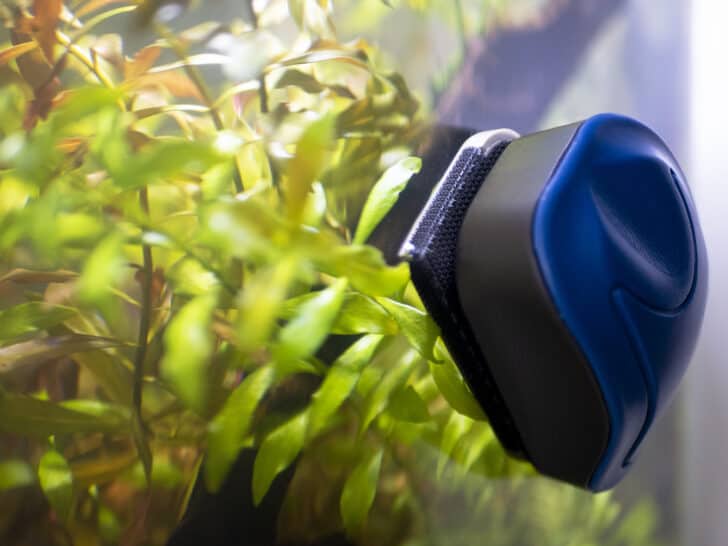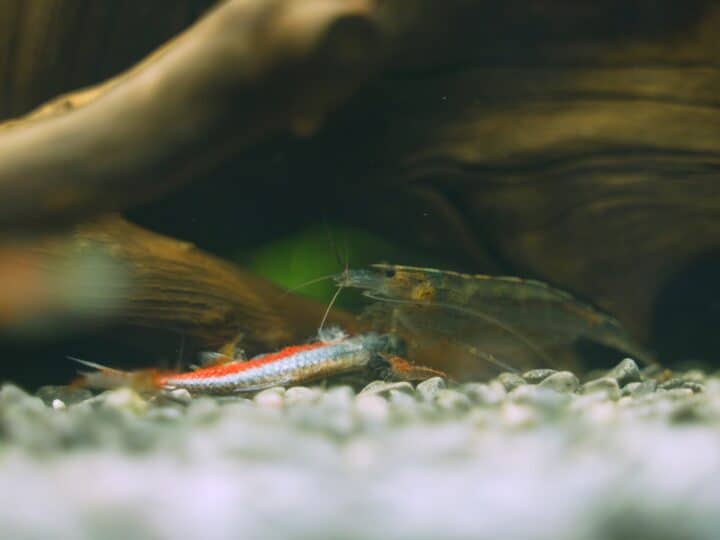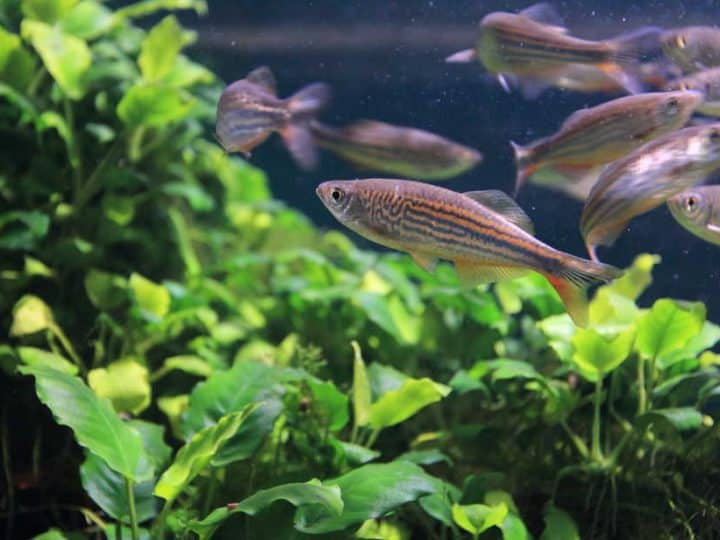The fish tank poop cleaner, also known as the gravel vacuum cleaner or the aquarium siphon, is a handy device that makes the process of cleaning dust, debris, poop, and leftover food that builds up much easier for a fish keeper.
Quick Answer
To clean fish poop with a vacuum, you’ll have to remove the decorations from your tank and turn the filtration off. Place one end of the siphon tube in the aquarium and the other end in a bucket. Start the vacuum process and gently move the siphon on the gravel until 25% of the water has drained.
Continue reading to learn how often you should vacuum and find out if there are other ways for cleaning the substrate.
Using a Gravel Vacuum: Step by Step
Gravel vacuums are a convenient way to clean fish poop. It removes more of the debris than a standard cleaning net and, as an added bonus, removes dirty water. This saves time and reduces the amount of work you have to do when cleaning out your fish tank. In this section, I’ll discuss how to use a gravel vacuum.
1. Prepare the Materials and the Tank
To prepare your tank for the cleaning process, you don’t have to remove the fish because catching them will cause more stress than vacuuming around them. However, it’s best to remove the aquarium decoration from the tank or move them to an area where you’re not planning to clean. That’s because dust and debris tend to collect underneath them.
Unplug the heaters, pumps, and filters before you start to minimize the water flow and prevent making the water foggy.
If you want to clean the filters and scrub off the algae, now’s the time. All the excess particles will float in the water, and you’ll have a chance to catch them with the vacuum afterward.
The Mag-Float Aquarium Cleaner is an excellent choice for those with both glass and acrylic aquariums like the Gulfstream Tropical AGU125MED Mag-Float Glass and the Gulfstream Tropical AGU130A Mag-Float Acrylic Aquarium Cleaner (both on Amazon.com). These products are unique because they actually float, making them easy to guide without sinking.
Now, gather the materials you’ll need, including the gravel vacuum and a bucket that will hold the dirty water.
2. Submerge Vacuum Tube
Place the bucket near the tank and below the aquarium level. Place the hose end of the vacuum inside the bucket. You can use a small clamp to make sure it doesn’t slip out of the water. Put the tube end of the vacuum inside the water and submerge it horizontally until it fills with water.
3. Start the Vacuum
Starting the siphon may be the trickiest part, but it’ll be pretty straightforward once you get the hang of it.
Once the tube is filled with water, start shaking it up and down while holding it a couple of inches from the substrate. The vacuum effect should start, and the water should flow from the tank into the bucket.
Here’s a simple video that shows you exactly how to start the vacuum:
There are other ways to start the vacuum, some of which could be a bit complicated. Since everyone learns better visually, watch this video that explains two other methods in detail:
The Faucet-assisted Python Gravel Tube and the pump-assisted Laifoo Aquarium Siphon Vacuum Cleaner from Amazon.com are both easy to control and make it easier to work with Battery-powered gravel cleaners like the EHEIM Quick Vac Pro Automatic Gravel Cleaner (also from Amazon.com), which can be fully submerged in up to 3 feet of water, making the optimum solution to aquarium cleaning.
4. Clean the Substrate
Once you get the water flowing, drive the tube’s head into the substrate and let it suck up the waste and dirt. Move the tube in a grid pattern, like you’re mowing a lawn.
If the suction is strong enough to grab the substrate, pinch the hose until the gravel pieces submerge, bring the tube upwards a bit, and release the hose, so the dust and debris get sucked.
If you want to stop the flow any time during the process, just pinch the hose.
5. Remove the Vacuum
Once you’ve drained about 25% of the aquarium water, lift the tube upwards, and then remove it from the water. Let the dirty water inside drain out into the bucket. Don’t let the water level fall below 75% because the water parameters will change drastically and shock the fish, and the beneficial bacteria population will get damaged.
6. Put Everything Back
Wash the vacuum and bucket with tap water. You can use the dirty water for your plants. Add enough fresh water to fill the tank again. Put the decoration back in place, and turn on the filtration, pumps, and heater.
How Do You Clean Fish Poop Without a Siphon?
You can clean fish poop without a siphon by introducing scavenger species such as shrimp or snails into your tank. Catfish species and Siamese algae eaters also clean up residue. A sieve can be used in place of a vacuum, but it kills most of the bacteria and increases the risk of an ammonia spike.
Cleaning the residue without a vacuum also requires more time and effort, but it can be done. Follow these steps to get the best results:
- Prepare a clean tank or bucket for your fish. The container should be dedicated to aquarium use only, and there should be no traces of chemical residue inside. Removing the fish is necessary because they may ingest the unhealthy detritus that starts to float around.
- Move about half of the aquarium water into the bucket. Then transfer the fish carefully using a net.
- Remove any decoration from the tank. And unplug the electrical equipment, including the pumps, heater, and lights.
- Scoop up some of the gravel and set it aside unwashed. Keeping some of the gravel uncleaned is necessary for preserving some of the beneficial bacteria population.
- Empty the water, scoop up the rest of the substrate. Put them in a sieve, and run underwater. Stir the substrate around until the water runs clean from underneath. Remember that the sieve and other equipment should be dedicated to this process.
- Return the gravel to the tank and mix it with the unwashed gravel you set aside. Put the decoration in place.
- Fill 50% of the tank with freshwater. Return the fish to the tank, and then add the remaining water that was in the tank before. Plug the equipment back in.
As you can see, this method has more ups and downs than using a vacuum. Also, removing the fish makes them stressed, and this method won’t work for those who have live plants.
But it’s much easier to purchase something like the Aqueon Aquarium Siphon Vacuum Gravel Cleaner from Amazon.com, which vacuums debris from gravel and removes dirty water to ensure you do the job right.
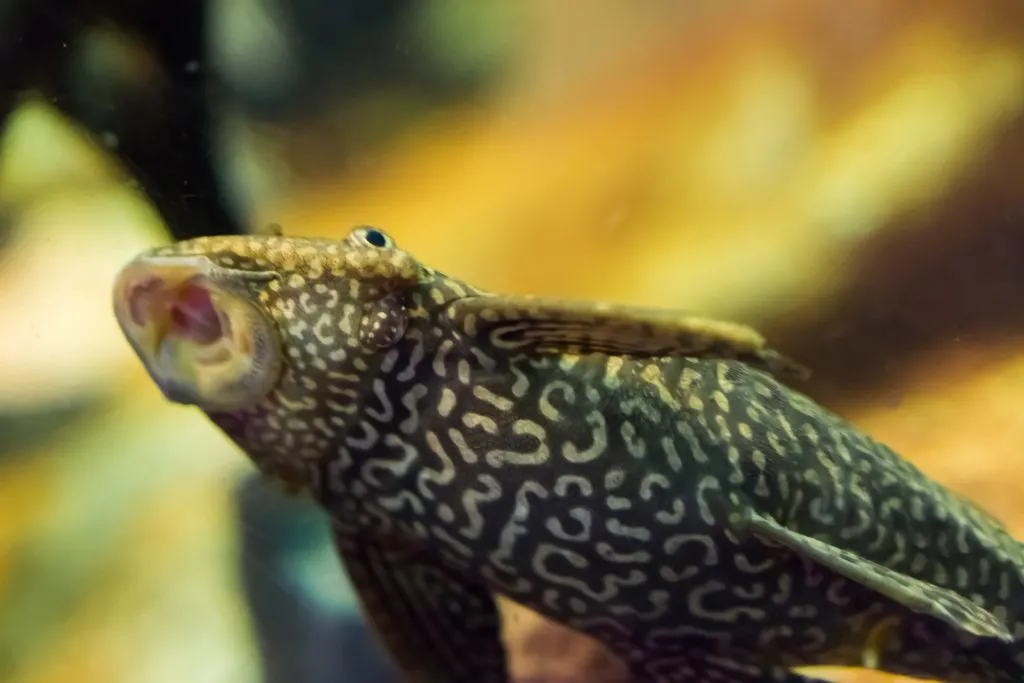
How Often Should I Clean Fish Poop?
You should clean fish poop as often as once every 1-2 weeks. Regular aquarium vacuuming is necessary, and the time depends on multiple factors including how many fish are in the tank, feeding, the type of fish in the aquarium, and the number of plants and scavengers.
Essentially, overcrowded tanks need cleaning more often. Overfeeding will lead to more mess faster. The type of food you use is also important since some varieties are messier than others. Some fish are just more wasteful, like goldfish and Oscars.
Live plants and scavenger species will maintain your substrate’s cleanness longer. Also, if you have robust pumps with strong filters, they’ll catch a great deal of the dirt, and you’ll need fewer vacuuming sessions.
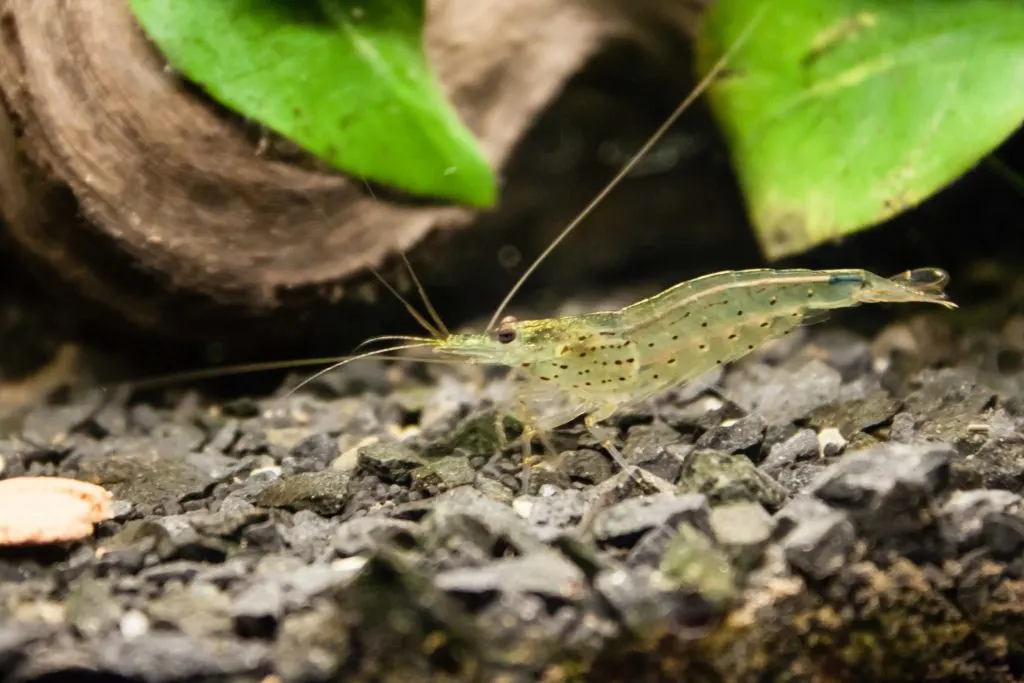
Final Words
As you must have realized, using an aquarium vacuum is a much easier solution for keeping your fish tank clean. Monitor your tank and the fish to figure out how often you should bring the siphon out. If the water seems clean and the fish seem bright and healthy, don’t overdo it!

